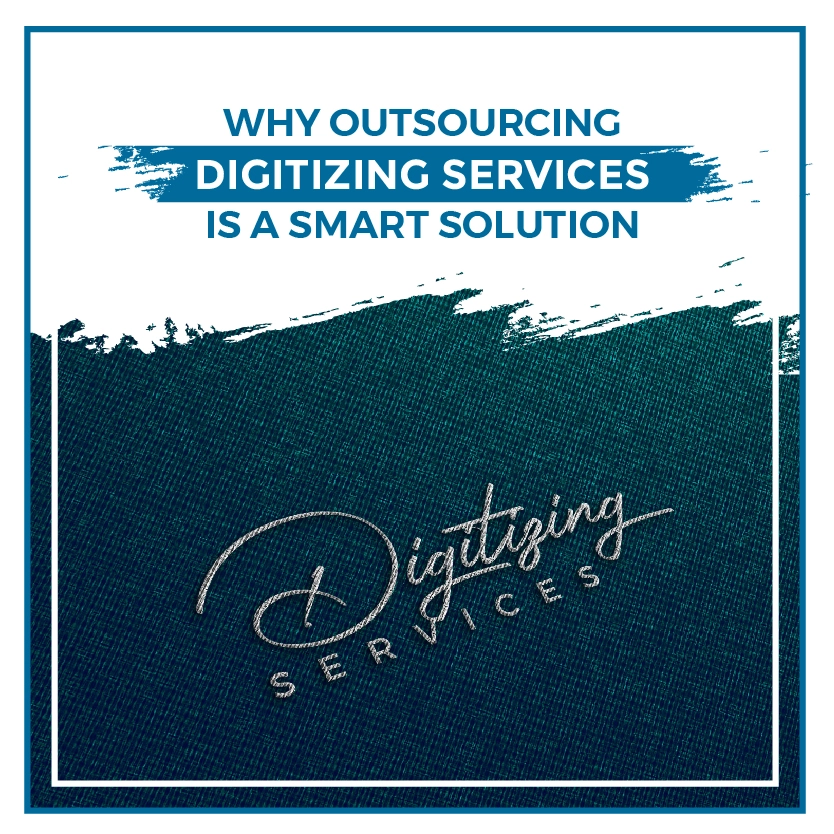Business
Easy DIY Embroidered Potholder and How To Create It

Do you want pretty Custom Embroidery kitchen décor that looks expensive but only requires you a fraction of the cost? We are giving you three easy and fun ideas so you can make your potholder according to your taste. Make sure to follow the steps outlined in this project tutorial for a DIY embroidered potholder.
Necessary Supplies For This Embroidered Potholder
- Tear away embroidery stabilizer
- Iron
- Fabric for embroidering (If recycling material, then use old jeans and heavy-duty canvas). Size depends on embroidery design but should be 2 inches long around all sides.
- Batting (or can use an old terry towel). The size must be the same as the potholder.
- Embroidery thread
- Custom embroidery design
Read More: Save money when creating a site
Steps To DIY Embroidered Potholder Using Embroidery Software
A basic potholder is a bag that is turned inside out and sewn shut. You can create them in the hoop and finish stitching them up either by hand or using a machine to stitch around the edge.
Step 1 – Use digitizing embroidery software for your potholder. Digitize a square by using a running stitch to fit your hoop. It will be your basting box that holds the canvas and terry in place while it stitches. However, in case you are using a 4×4-inch hoop, ignore this step. You will sew them on the sewing machine in order to give yourself a large mitt.
Step 2 – Add your desired embroidered text or design.
Step 3 – Digitize a square by using a triple stitch to fit your hoop. In case you are using a 4×4 hoop, skip this step. Leave one side’s portion open, so you can turn it inside out.
Assembling Material For Stitching
Step 1 – Hoop a medium tear-away stabilizer piece.
Step 2 – Lay a piece of batting or terry cloth 2 inches larger than the finished potholder you want. Batting in the center makes a puffy effect while also acting as a great insulator to keep your hands safe.
Step 3 – Lay a piece of canvas or denim 2 inches larger than the finished potholder you want.
Step 4 – Stitch your design.
Creating The Embroidered Potholder
Step 1 – Trim the potholder ¼ inch from the stitching and taper the corners so there is less fabric to turn inside out.
Step 2 – In the opening, leave a “tab” so you have enough fabric to turn over.
Step 3 – Turn the potholder inside out and use a closed scissor or corner tool to push out its corners.
Step 4 – Fold the tab in and then press the steam iron.
Step 5 – Either stitch or hand sews a ¼ inch of top-stitching around the edge.
Step 6 – Sew a diagonal “X”, if you want to keep the material in place through the potholder.
Step 7 – Use Your Mitt..!
Designs And Patterns Of Embroidered Potholders
Once you learn this easy process, you can make a lot of variations that you can do one daily for a month and not have scratched the surface! Below are the three best ideas to get started.
-
Quilted Machine Embroidered Potholder
Use a simple quilted design to make a sturdy mitt. Choosing distinct embroidery designs creates distinct looks. For instance, you can use this sun-quilted design for bohemian-inspired kitchen decor.
When using a custom embroidery design, keep in mind that you can break the design apart and change colors in your embroidery software.
After adjusting the designs according to your preferences, you have made a one-of-a-kind potholder that is ready to keep your hands safe!
-
Fun Saying Machine Embroidered Potholder
Adding some text and sayings is another way to further personalize your embroidered potholder and add fun to it.
When using a custom embroidery design, use the same process we have mentioned above. Inside the stitched border, insert the design, leaving at least ½ to 1.0 inches between the border and the design.
-
Cross Stitch Machine Embroidered Potholder
If you have not tried the new Hatch 3 Cross Stitch alphabet, now is the time!
Resizable and super easy to use – just insert like regular lettering. The Cross Stitch alphabet is used just like regular lettering and stitches like a dream. No calculating or counting. Just type in and press go!
Business
DoepBox: The Complete Guide to This Revolutionary Platform

Introduction
DoepBox has emerged as a game-changing solution for users seeking streamlined workflow management and enhanced productivity. Whether you’re a small business owner juggling multiple projects or a creative professional managing complex campaigns, DoepBox offers the tools and flexibility to transform how you work.
This comprehensive guide explores everything you need to know about DoepBox, from its standout features to real-world success stories. You’ll discover how to maximize the platform’s potential, compare it against competitors, and determine if it’s the right fit for your specific needs.
Key Features and Benefits
DoepBox distinguishes itself through a robust suite of features designed to simplify complex workflows while maintaining the flexibility power users demand.
Intuitive Project Management
The platform’s project management capabilities center around visual organization and seamless collaboration. Users can create custom workflows, assign tasks with specific deadlines, and monitor progress through real-time dashboards. The drag-and-drop interface eliminates the learning curve typically associated with project management tools.
Advanced Automation Tools
DoepBox’s automation features reduce repetitive tasks and minimize human error. Users can set up triggers that automatically move projects through different stages, send notifications to team members, and generate reports based on predefined criteria. These automation capabilities save hours of manual work each week.
Comprehensive Integration Options
The platform connects with over 100 popular business applications, including CRM systems, accounting software, and communication tools. This extensive integration ecosystem means users rarely need to switch between different applications throughout their workday.
Robust Security and Data Protection
DoepBox implements enterprise-grade security measures, including end-to-end encryption, two-factor authentication, and regular security audits. Data is stored across multiple secure servers with automatic backups, ensuring business continuity even during unexpected disruptions.
How to Use DoepBox: A Step-by-Step Guide
Getting started with DoepBox requires minimal technical expertise, though understanding the platform’s structure will help you maximize its potential from day one.
Setting Up Your Workspace
Begin by creating your primary workspace, which serves as the central hub for all your projects and team activities. Choose a workspace name that reflects your organization or department, then customize the layout to match your preferred workflow style.
Upload your team members and assign appropriate permission levels. DoepBox offers granular control over user access, allowing you to restrict sensitive information while maintaining transparency for collaborative projects.
Creating Your First Project
Navigate to the project creation interface and select a template that closely matches your project type. DoepBox offers templates for marketing campaigns, product development, event planning, and general business operations. Each template includes pre-configured stages and task categories to accelerate your setup process.
Customize the project stages to reflect your specific workflow. Add custom fields for tracking important metrics, set up automated notifications for critical milestones, and establish deadline parameters that align with your business requirements.
Configuring Automation Rules
Access the automation center to create rules that streamline repetitive processes. Start with simple automations, such as moving completed tasks to the next stage or sending reminder emails before deadlines. As you become more comfortable with the system, explore advanced automation options like conditional logic and multi-step workflows.
Monitoring Progress and Analytics
DoepBox’s analytics dashboard provides insights into team productivity, project timelines, and resource allocation. Regular monitoring helps identify bottlenecks before they impact project delivery and reveals opportunities for process improvement.
DoepBox vs. Competitors
The project management software market includes several established players, each with distinct strengths and limitations. Understanding how DoepBox compares helps inform your decision-making process.
DoepBox vs. Traditional Solutions
Unlike legacy project management tools that require extensive training and complex setup procedures, DoepBox prioritizes user experience and rapid deployment. The platform’s modern interface and intuitive navigation reduce onboarding time from weeks to days.
Traditional solutions often struggle with scalability, requiring expensive upgrades as teams grow. DoepBox’s flexible pricing structure accommodates expansion without forcing users into restrictive plan categories.
Integration Capabilities Comparison
While competitors typically offer 20-50 integrations, DoepBox’s extensive integration library provides significantly more options for connecting existing business tools. This comprehensive approach eliminates the need for multiple middleware solutions and reduces overall technology costs.
Customization and Flexibility
DoepBox strikes an optimal balance between out-of-the-box functionality and customization options. Users can modify workflows, create custom fields, and design personalized dashboards without requiring developer assistance or additional fees.
User Testimonials and Success Stories
Real-world experiences demonstrate DoepBox’s practical value across various industries and use cases.
Marketing agencies report significant improvements in client project delivery times after implementing DoepBox’s collaborative features. The platform’s client portal functionality allows customers to track progress and provide feedback without disrupting internal workflows.
Software development teams highlight DoepBox’s ability to bridge the gap between technical and non-technical team members. The platform’s flexible structure accommodates both agile development practices and traditional project management approaches.
Small business owners frequently mention DoepBox’s role in scaling their operations. The platform grows alongside businesses, providing enterprise-level capabilities without the associated complexity or cost barriers.
Pricing and Plans
DoepBox offers three primary pricing tiers designed to accommodate different organizational needs and budget constraints.
Starter Plan
The entry-level option includes core project management features, basic automation tools, and standard integrations. This plan supports up to 10 team members and provides 5GB of storage space, making it suitable for small teams and startup organizations.
Professional Plan
The mid-tier option adds advanced automation capabilities, unlimited integrations, priority customer support, and expanded storage capacity. Professional plans accommodate larger teams and include additional security features required by growing businesses.
Enterprise Plan
The premium tier provides custom integration development, dedicated account management, advanced analytics, and white-label options. Enterprise customers receive personalized onboarding assistance and ongoing optimization consulting.
Frequently Asked Questions
How long does DoepBox implementation typically take?
Most organizations complete basic setup within 24-48 hours. Complex configurations involving extensive automations and custom integrations may require one to two weeks, depending on existing system complexity.
Can DoepBox handle sensitive or confidential projects?
Yes, DoepBox implements enterprise-grade security measures including SOC 2 compliance, GDPR adherence, and industry-standard encryption protocols. The platform regularly undergoes third-party security audits to maintain certification standards.
Does DoepBox offer mobile access?
The platform includes fully-featured mobile applications for iOS and Android devices. Mobile apps provide complete functionality, allowing users to manage projects, communicate with team members, and access important documents from any location.
What kind of customer support does DoepBox provide?
Support options vary by plan level, ranging from community forums and knowledge base access for starter plans to dedicated account managers for enterprise customers. Response times typically range from 2-24 hours depending on issue complexity and plan level.
Can existing project data be imported into DoepBox?
DoepBox supports data migration from most popular project management platforms. The migration process includes data mapping assistance and validation to ensure information accuracy during the transition.
Transform Your Workflow with DoepBox
DoepBox represents a significant advancement in project management technology, combining powerful features with user-friendly design principles. The platform’s comprehensive approach to workflow automation, team collaboration, and progress tracking addresses common pain points experienced by modern organizations.
Success with DoepBox depends on thoughtful implementation and ongoing optimization. Start with basic features, gradually incorporating advanced capabilities as your team becomes comfortable with the platform. Take advantage of DoepBox’s extensive resource library and customer support options to maximize your investment.
Consider beginning with a pilot project to evaluate DoepBox’s fit within your specific workflow requirements. This approach allows you to assess the platform’s benefits while minimizing disruption to ongoing operations.
Business
Understanding ev01net: Your Complete Guide to Getting Started

Introduction
The digital landscape continues to evolve at breakneck speed, with new platforms and technologies emerging regularly. Among these innovations, ev01net has captured attention as a noteworthy addition to the online ecosystem. But what exactly is ev01net, and why should you care about it?
This comprehensive guide will walk you through everything you need to know about ev01net. From its core features and functionality to practical implementation strategies, you’ll discover how this platform can potentially transform your digital workflow. Whether you’re a tech enthusiast, business professional, or curious newcomer, you’ll gain valuable insights into leveraging ev01net effectively.
By the end of this article, you’ll have a clear understanding of ev01net’s capabilities, practical knowledge for getting started, and actionable strategies for maximizing its potential in your specific use case.
What is ev01net and Why Does it Matter?
ev01net represents a modern approach to digital connectivity and data management. At its core, the platform serves as a bridge between traditional online services and emerging technological requirements that users face today.
The platform was designed to address common pain points in digital workflows, offering streamlined solutions for data processing, connectivity management, and user interface optimization. Unlike many complex enterprise solutions, ev01net focuses on accessibility while maintaining robust functionality.
What sets ev01net apart is its emphasis on user-centric design. The developers recognized that powerful technology means little if users can’t harness it effectively. This philosophy shaped every aspect of the platform, from initial setup to advanced feature implementation.
Key Features That Make ev01net Stand Out
Advanced Data Processing Capabilities
ev01net’s data processing engine handles multiple input formats seamlessly. Users can upload, transform, and analyze data without worrying about compatibility issues or format restrictions. The system automatically detects file types and applies appropriate processing protocols.
The platform supports real-time data synchronization, ensuring that changes made in one area immediately reflect across all connected systems. This eliminates the lag time and manual updates that often frustrate users of traditional platforms.
Intuitive User Interface Design
Navigation within ev01net feels natural and logical. The dashboard presents essential information at a glance while keeping advanced features easily accessible through organized menus and contextual controls.
Customization options allow users to tailor their workspace according to specific needs and preferences. Whether you prefer minimalist layouts or information-rich displays, ev01net adapts to your working style.
Robust Security Framework
Security concerns rank among the top priorities for any digital platform. ev01net implements multi-layered protection protocols, including encrypted data transmission, secure authentication systems, and regular security audits.
Users maintain complete control over their data privacy settings. Granular permissions allow for precise control over who can access specific information and what actions they can perform.
Cross-Platform Compatibility
ev01net functions smoothly across different operating systems and devices. Whether you’re working on Windows, macOS, Linux, or mobile platforms, the experience remains consistent and fully functional.
API integration capabilities enable ev01net to connect with existing tools and services in your workflow. This interoperability reduces the need to abandon current systems when adopting ev01net.
Step-by-Step Guide to Using ev01net
Getting Started: Account Setup and Configuration
Begin by creating your ev01net account through the official website. The registration process requires basic information and email verification to ensure account security.
Once logged in, complete the initial setup wizard. This guided process helps configure essential settings, including privacy preferences, notification settings, and basic integration options.
Take time to explore the dashboard during your first session. Familiarize yourself with the main navigation elements and locate key features you’ll use regularly.
Essential Configuration Steps
Configure your workspace by selecting relevant modules and features. ev01net offers modular functionality, allowing you to activate only the components you need for your specific use case.
Set up data sources and connections to external services. The connection manager provides step-by-step guidance for linking ev01net with your existing tools and platforms.
Customize notification preferences to stay informed without becoming overwhelmed. Choose which events trigger alerts and how you prefer to receive notifications.
Advanced Setup Options
For users requiring sophisticated functionality, ev01net provides advanced configuration options. These include custom workflow automation, detailed analytics settings, and enterprise-grade security configurations.
API key generation enables programmatic access to ev01net features. Developers can create custom integrations and automate complex workflows using ev01net’s comprehensive API documentation.
Benefits of Implementing ev01net in Your Workflow
Enhanced Productivity and Efficiency
Users typically experience significant time savings after implementing ev01net. Automated processes handle routine tasks, freeing up time for higher-value activities that require human creativity and decision-making.
The platform’s intuitive design reduces the learning curve associated with new technology adoption. Most users become proficient with basic features within days rather than weeks or months.
Improved Data Management and Analysis
ev01net’s data handling capabilities transform how users interact with information. Complex datasets become manageable through intelligent organization and powerful search functionality.
Built-in analytics tools provide insights that might otherwise require separate software solutions. Users gain deeper understanding of their data patterns and trends without additional technical expertise.
Cost-Effective Solution
Compared to purchasing multiple specialized tools, ev01net offers comprehensive functionality at competitive pricing. The all-in-one approach eliminates the need for various subscriptions and licenses.
Reduced training costs represent another financial benefit. Since ev01net consolidates multiple functions into a single platform, teams need to learn only one system instead of several different tools.
Real-World Applications and Success Stories
Small Business Implementation
A local marketing agency adopted ev01net to streamline client data management and campaign tracking. Within three months, they reduced administrative time by 40% while improving client reporting accuracy.
The agency particularly benefited from ev01net’s integration capabilities, connecting their existing CRM with social media management tools and analytics platforms seamlessly.
Educational Institution Case Study
A university department implemented ev01net to manage research data and collaboration among faculty members. The platform facilitated secure data sharing while maintaining compliance with institutional privacy requirements.
Students and faculty reported improved collaboration efficiency, with project timelines shortening by an average of 25% due to streamlined communication and data access.
Enterprise-Level Deployment
A mid-sized technology company integrated ev01net into their product development workflow. The platform’s ability to handle complex data relationships and provide real-time updates proved invaluable for cross-team coordination.
The implementation resulted in faster decision-making cycles and improved product quality through better data visibility across departments.
Tips and Best Practices for Maximum Results
Optimization Strategies
Start with basic features and gradually incorporate advanced functionality as your comfort level increases. This approach prevents overwhelming yourself while ensuring solid foundation knowledge.
Regularly review and update your configurations as your needs evolve. ev01net’s flexibility allows for ongoing customization to match changing requirements.
Common Pitfalls to Avoid
Don’t attempt to implement all features simultaneously. Focus on solving specific problems first, then expand usage as you gain experience and confidence with the platform.
Avoid neglecting security settings during initial setup. Take time to properly configure access controls and privacy settings from the beginning rather than addressing these concerns later.
Performance Enhancement Tips
Monitor system performance regularly through ev01net’s built-in analytics dashboard. This helps identify potential bottlenecks before they impact your workflow significantly.
Keep your data organized using ev01net’s tagging and categorization features. Well-organized data improves search efficiency and overall platform performance.
Frequently Asked Questions
Is ev01net suitable for beginners?
Yes, ev01net was designed with user-friendliness in mind. The platform includes comprehensive tutorials, guided setup processes, and responsive customer support to help newcomers get started quickly.
What types of data can ev01net handle?
ev01net supports a wide variety of data formats, including text files, spreadsheets, databases, images, and multimedia content. The platform automatically detects file types and applies appropriate processing methods.
How secure is my data on ev01net?
ev01net implements industry-standard security measures, including encryption, secure authentication, and regular security audits. Users maintain full control over their data privacy settings and access permissions.
Can ev01net integrate with my existing tools?
The platform offers extensive integration capabilities through APIs and pre-built connectors for popular business tools. Most users can connect ev01net with their existing workflow without significant disruption.
What support options are available?
ev01net provides multiple support channels, including documentation, video tutorials, community forums, and direct customer service. Premium plans include priority support with faster response times.
Taking Your Next Steps with ev01net
ev01net represents a powerful solution for modern digital workflow challenges. Its combination of user-friendly design, robust functionality, and flexible integration options makes it suitable for various applications, from individual productivity to enterprise-level implementations.
The key to success with ev01net lies in starting with clear objectives and gradually expanding usage as you become more familiar with its capabilities. Begin by identifying specific problems you want to solve, then explore how ev01net’s features can address those challenges.
Consider starting with a trial period to evaluate how ev01net fits your specific needs. This hands-on experience will provide the clearest picture of the platform’s potential value for your situation. Remember that the most sophisticated tool is only as effective as your commitment to learning and implementing it properly.
Business
Professional Accounting Services in removed contabilidade em bh: Your Complete Guide

Introduction
Finding reliable accounting services can make or break your business success. For companies and entrepreneurs in Belo Horizonte, navigating Brazil’s complex tax system and financial regulations requires expert guidance from professionals who understand both local requirements and modern business practices.
This comprehensive guide explores the accounting landscape in removed contabilidade em bh, helping you understand what services are available, how to choose the right firm, and why professional accounting support is essential for your business growth. Whether you’re a startup founder, small business owner, or established company, the right accounting partnership can save you time, money, and potential legal complications.
Essential Accounting Services Available in removed contabilidade em bh
Tax Planning and Compliance
Professional accounting firms in Belo Horizonte offer comprehensive tax planning services designed to minimize your tax burden while ensuring full compliance with Brazilian regulations. These services include:
Strategic Tax Planning: Accountants analyze your business structure and operations to identify legitimate tax-saving opportunities throughout the year, not just during tax season.
Monthly Tax Obligations: Managing complex requirements like ICMS, ISS, PIS, COFINS, and federal income taxes requires specialized knowledge of constantly changing regulations.
Digital Tax Bookkeeping (SPED): Modern firms help businesses implement and maintain the Public Digital Bookkeeping System required by Brazilian authorities.
Financial Reporting and Analysis
Beyond basic compliance, accounting firms provide valuable financial insights through detailed reporting and analysis services.
Monthly Financial Statements: Regular profit and loss statements, balance sheets, and cash flow reports keep you informed about your business performance.
Management Reporting: Customized reports help business owners make informed decisions about investments, expansion, and operational improvements.
Budget Planning: Professional accountants assist with creating realistic budgets and monitoring performance against financial goals.
Business Consulting Services
Many accounting firms extend their services beyond traditional bookkeeping to offer strategic business consulting.
Business Structure Optimization: Advice on the most tax-efficient business structures, whether you’re operating as a MEI, Ltda, or corporation.
Process Improvement: Recommendations for streamlining financial processes and implementing better internal controls.
Growth Planning: Financial modeling and planning support for businesses looking to expand or attract investment.
Who Benefits from Professional Accounting Services
Small and Medium Enterprises (SMEs)
SMEs represent the backbone of removed contabilidade em bh Horizonte’s economy, and they face unique accounting challenges that professional services can address effectively.
Small businesses often lack the resources for full-time accounting staff but still need expert guidance to navigate tax obligations, maintain proper records, and plan for growth. Professional accounting services provide this expertise at a fraction of the cost of hiring internal staff.
Startups and Entrepreneurs
New businesses face particular challenges in establishing proper financial systems and understanding their tax obligations from day one.
Accounting firms specializing in startups offer services like business registration assistance, initial chart of accounts setup, and guidance on choosing the most advantageous tax regime for new companies.
Established Corporations
Larger businesses require sophisticated accounting services including audit preparation, complex tax planning, and detailed financial analysis.
These companies benefit from firms that offer dedicated account management, regular strategic reviews, and specialized services like transfer pricing documentation or international tax planning.
Individual Professionals and Freelancers
High-earning professionals, consultants, and freelancers need specialized advice on personal tax optimization and business structure decisions.
Many accounting firms offer services specifically designed for individual professionals, including guidance on whether to operate as an individual (Pessoa Física) or incorporate (Pessoa Jurídica).
Key Advantages of Professional Accounting Services
Local Expertise and Regulatory Knowledge
Belo Horizonte accounting firms possess deep understanding of both federal Brazilian tax law and local municipal requirements specific to the city and Minas Gerais state.
This local knowledge proves invaluable when dealing with municipal service taxes (ISS), local licensing requirements, and regional incentive programs that could benefit your business.
Technology-Driven Efficiency
Modern accounting firms leverage advanced software and cloud-based systems to provide real-time financial information and streamline routine processes.
Many firms offer client portals where you can access financial reports, upload documents, and communicate with your accounting team 24/7. This technology integration reduces errors and improves response times.
Personalized Service Approach
Unlike large national firms, many Belo Horizonte accounting practices offer personalized service with direct access to senior partners and customized solutions for each client’s unique needs.
This personalized approach means your accountant understands your industry, business model, and specific challenges, leading to more relevant advice and better outcomes.
Risk Management and Compliance
Professional accounting services help protect your business from costly penalties and legal issues by ensuring ongoing compliance with all applicable regulations.
Regular compliance monitoring, deadline management, and proactive communication about regulatory changes help minimize business risks and avoid surprise penalties.
Understanding the Local Business Environment
Regulatory Landscape in Minas Gerais
Belo Horizonte businesses must navigate federal, state, and municipal regulations that can vary significantly from other Brazilian cities.
The state of Minas Gerais offers various tax incentive programs for businesses in specific industries or locations, and local accounting firms can help you identify and apply for relevant benefits.
Economic Trends and Opportunities
The greater Belo Horizonte metropolitan area continues to evolve as a technology and services hub, creating new opportunities and challenges for businesses.
Professional accountants stay current with local economic trends, helping clients position themselves advantageously for growth opportunities while managing financial risks associated with economic changes.
Industry-Specific Considerations
Different industries face unique accounting and tax challenges in the Belo Horizonte market.
Manufacturing companies must manage complex ICMS obligations, while service businesses need to optimize ISS calculations. Technology companies may qualify for special tax regimes, while retail businesses face specific inventory and sales tax requirements.
Questions to Ask When Choosing an Accounting Firm
What services do you provide beyond basic bookkeeping?
Look for firms that offer comprehensive services including tax planning, business consulting, and financial analysis rather than just compliance-focused services.
How do you stay current with regulatory changes?
Ensure your accounting firm has systems in place for monitoring and implementing new regulations that could affect your business.
What technology platforms do you use?
Modern accounting firms should offer cloud-based solutions, client portals, and integration with popular business software.
Can you provide references from similar businesses?
Ask for references from clients in your industry or business size category to ensure the firm has relevant experience.
What is your communication style and frequency?
Understand how often you’ll receive updates, how quickly questions are answered, and what level of access you’ll have to senior staff.
Taking the Next Step for Your Business
Choosing the right accounting partner represents a critical decision for your business success. The complexity of Brazilian tax law and the fast-changing regulatory environment make professional accounting support essential rather than optional.
Start by assessing your current accounting needs and identifying areas where professional expertise could add value. Consider both your immediate compliance requirements and longer-term strategic goals when evaluating potential accounting partners.
Schedule consultations with several accounting firms to compare their services, expertise, and approach. The right accounting partner will demonstrate clear understanding of your business, provide specific examples of how they can add value, and offer transparent pricing for their services.
Remember that the lowest price doesn’t always represent the best value. Focus on finding a firm that combines technical expertise, local knowledge, and service quality to support your business growth objectives.
-

 Travel3 years ago
Travel3 years agoNEW ZEALAND VISA FOR ISRAELI AND NORWEGIAN CITIZENS
-

 Technology3 years ago
Technology3 years agoIs Camegle Legit Or A Scam?
-

 Uncategorized3 years ago
Uncategorized3 years agoAMERICAN VISA FOR NORWEGIAN AND JAPANESE CITIZENS
-

 Health3 years ago
Health3 years agoHealth Benefits Of Watermelon
-

 Home Improvement6 months ago
Home Improvement6 months agoArtificial Grass Designs: Perfect Solutions for Urban Backyards
-

 Fashion2 years ago
Fashion2 years agoBest Essentials Hoodies For Cold Weather
-

 Uncategorized3 years ago
Uncategorized3 years agoHow can I write a well-structured blog post?
-

 Technology1 year ago
Technology1 year agoImagine a World Transformed by Technology and Innovation of 2023-1954















